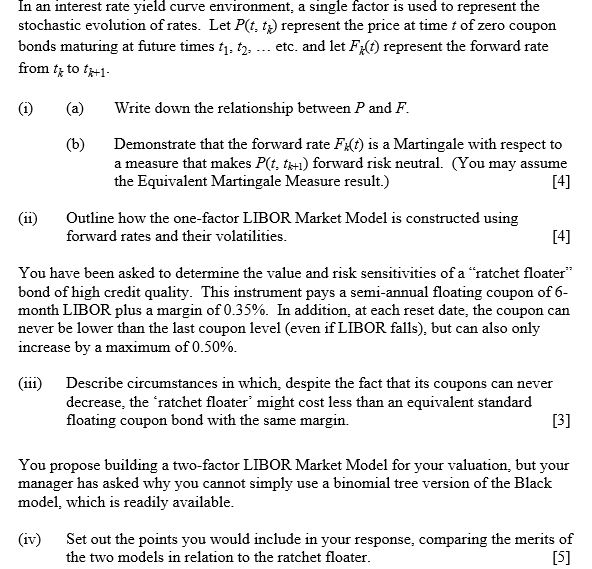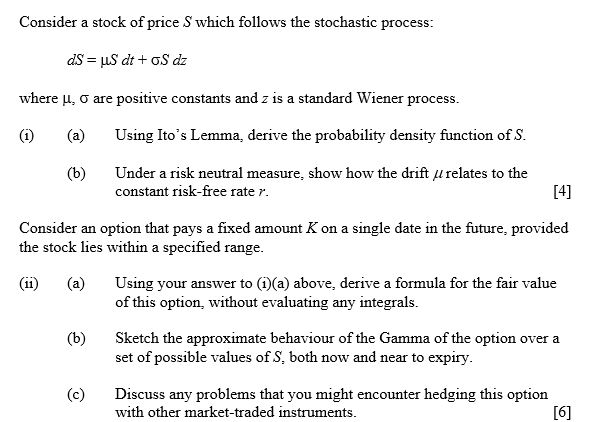

What shows an increase in capacity on the PPF model
In an interest rate yield curve environment, a single factor is used to represent the stochastic evolution of rates. Let P(t, ty) represent the price at time : of zero coupon bonds maturing at future times (1. t2. ... etc. and let Fy() represent the forward rate from t to #+1- (1) (a) Write down the relationship between P and F. ( b ) Demonstrate that the forward rate Fi(t) is a Martingale with respect to a measure that makes P(t, +1) forward risk neutral. (You may assume the Equivalent Martingale Measure result.) [4] (ii) Outline how the one-factor LIBOR Market Model is constructed using forward rates and their volatilities. [4] You have been asked to determine the value and risk sensitivities of a "ratchet floater" bond of high credit quality. This instrument pays a semi-annual floating coupon of 6- month LIBOR plus a margin of 0.35%. In addition, at each reset date, the coupon can never be lower than the last coupon level (even if LIBOR falls), but can also only increase by a maximum of 0.50%. (iii) Describe circumstances in which, despite the fact that its coupons can never decrease, the ratchet floater' might cost less than an equivalent standard floating coupon bond with the same margin. [3] You propose building a two-factor LIBOR Market Model for your valuation, but your manager has asked why you cannot simply use a binomial tree version of the Black model, which is readily available. (iv) Set out the points you would include in your response, comparing the merits of the two models in relation to the ratchet floater. [5]Consider a stock of price S which follows the stochastic process: dS = us dt + GS dz where u, G are positive constants and z is a standard Wiener process. (i) (a) Using Ito's Lemma, derive the probability density function of S. (b) Under a risk neutral measure, show how the drift / relates to the constant risk-free rate r. [4] Consider an option that pays a fixed amount K on a single date in the future, provided the stock lies within a specified range. (11) (a) Using your answer to (i)(a) above, derive a formula for the fair value of this option, without evaluating any integrals. (b) Sketch the approximate behaviour of the Gamma of the option over a set of possible values of S, both now and near to expiry. (c) Discuss any problems that you might encounter hedging this option with other market-traded instruments. [6]










